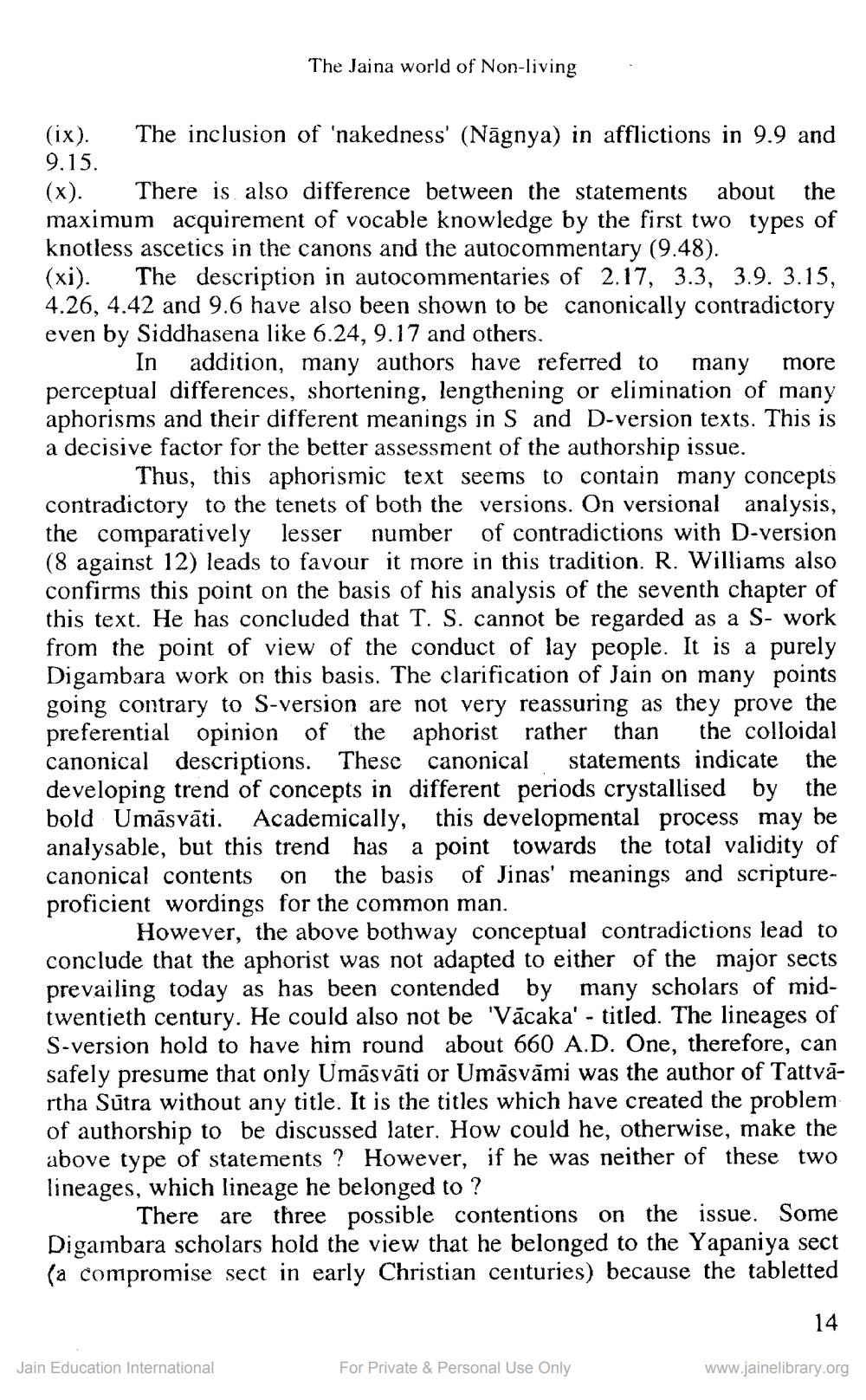________________
The Jaina world of Non-living
Iust
(ix). The inclusion of 'nakedness' (Nāgnya) in afflictions in 9.9 and 9.15. (x). There is also difference between the statements about the maximum acquirement of vocable knowledge by the first two types of knotless ascetics in the canons and the autocommentary (9.48). (xi). The description in autocommentaries of 2.17, 3.3, 3.9. 3.15, 4.26, 4.42 and 9.6 have also been shown to be canonically contradictory even by Siddhasena like 6.24, 9.17 and others.
In addition, many authors have referred to many more perceptual differences, shortening, lengthening or elimination of many aphorisms and their different meani 1S and D-version texts. This is a decisive factor for the better assessment of the authorship issue.
Thus, this aphorismic text seems to contain many concepts contradictory to the tenets of both the versions. On versional an the comparatively lesser number of contradictions with D-version (8 against 12) leads to favour it more in this tradition. R. Williams also confirms this point on the basis of his analysis of the seventh chapter of this text. He has concluded that T. S. cannot be regarded as a S- work from the point of view of the conduct of lay people. It is a purely Digambara work on this basis. The clarification of Jain on many points going contrary to S-version are not very reassuring as they prove the preferential opinion of the aphorist rather than the colloidal canonical descriptions. These canonical statements indicate the developing trend of concepts in different periods crystallised by the bold Umāsvāti. Academically, this developmental process may be analysable, but this trend has a point towards the total validity of canonical contents on the basis of Jinas' meanings and scriptureproficient wordings for the common man.
However, the above bothway conceptual contradictions lead to conclude that the aphorist was not adapted to either of the major sects prevailing today as has been contended by many scholars of midtwentieth century. He could also not be 'Vācaka' - titled. The lineages of S-version hold to have him round about 660 A.D. One, therefore, can safely presume that only Umāsvāti or Umāsvāmi was the author of Tattvārtha Sūtra without any title. It is the titles which have created the problem of authorship to be discussed later. How could he, otherwise, make the above type of statements? However, if he was neither of these two lineages, which lineage he belonged to ?
There are three possible contentions on the issue. Some Digambara scholars hold the view that he belonged to the Yapaniya sect (a compromise sect in early Christian centuries) because the tabletted
14
Jain Education International
For Private & Personal Use Only
www.jainelibrary.org




